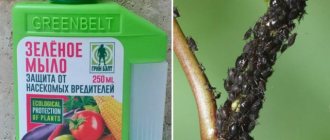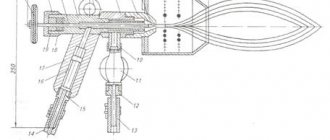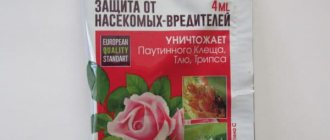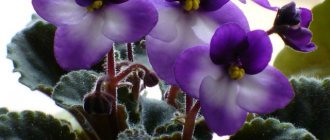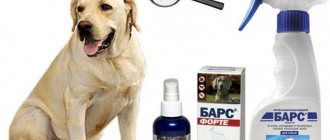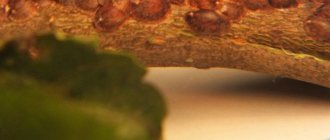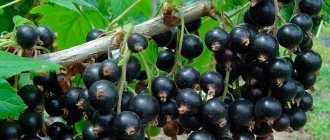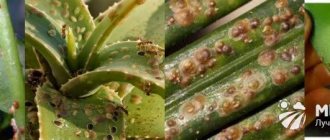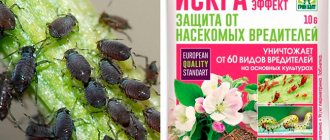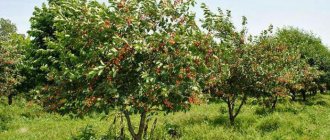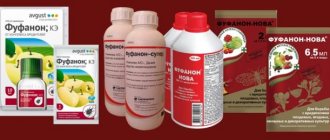The drug Trichodermin belongs to a completely new type of product, the action of which is aimed at the biological protection of cultivated plants. The product is considered a good alternative to chemical pesticides that pollute the environment. The active substances of Trichodermin help rid crops of common fungal diseases, and also stimulate growth, increase soil fertility and plant immunity.
"Trichoderma veride" - a biological product for protecting plants from diseases
An effective biological product for protecting plants from diseases.
It is based on microscopic fungi that are friendly to cultivated plants and suppress more than 60 species(!) of pathogenic microbes. Protects against root and fruit rot, blackleg, white and gray rot, macrosporiosis, fusarium, late blight, anthracnose, wilt, etc. Once in moist soil, Trichoderma spores germinate, releasing natural “antibiotics” and disinfecting the soil around. At the same time, the drug has a long-term effect: it destroys the resting and overwintering stages of pathogens. Once on a damaged area of a diseased plant, the spores germinate, feeding on the diseased tissue, and at the same time healing the plant.
Comparison of Trichodermin and Fitosporin
The manufacturers of these insecticides claim that the main difference between them is the speed of action.
Fitosporin is based on a special spore culture , which, thanks to its vital processes, displaces and also suppresses the appearance and reproduction of various fungal and bacterial diseases.
Trichodermin, due to its composition, begins to fight and destroy pathogenic microorganisms much faster . But Fitosporin spreads much more slowly, but penetrates inside the plant, thanks to which it can destroy various diseases from the inside. In addition, this insecticide is often used for storing fruits and plant bulbs.
Thus, each of these drugs has its own advantages . Trichodermin acts faster and its effect is longer lasting. But its competitor is able to cope with a number of other diseases, but the process itself takes longer.
Packaging/Barcode
| 4607043208781 | trichoderma veride 15 g, package |
| 4620015690568 | trichoderma veride 30 g, package |
| 4680028940043 | bottle Opti DOZA 120 g |
Trichoderma Veride in a bag and jar
Packaging 150 g
Reviews
Many gardeners, gardeners and lovers of indoor floriculture speak positively about the properties of the drug Trichodermin. They were able to improve the condition of the soil and the growth of cultivated plants on it even after adding a dry preparation to the soil.
Supporters of organic farming consider trichodermin an excellent remedy that does not accumulate in plants or soil and does not pollute the environment. Consumers speak of it as a powerful “devourer” of pathogenic microorganisms. They willingly use it as a fertilizer that increases the fertile and mechanical properties of soils.
However, there are skeptics who consider the drug to be useless. They recommend following the watering regime, not thickening the plantings, and at the first signs of alarm, using the old grandmother’s method of spilling the soil with a solution of potassium permanganate; they also advise soaking seeds and other planting material in it.
"Trichoderma veride" - instructions for use
Apply by watering at the root, spraying plants, soaking seeds and planting material, and direct mixing with soil.
Pre-sowing seed soaking
- cabbage
- from “black leg”, vascular, mucous bacteriosis; - cucumber, tomato
- from root and basal rot, tracheomycotic wilt, ascochyta blight, gray rot).
Soak
for 1–2 hours, followed by drying in the shade.
Dosage of use of the drug:
— 3.0 g/1 l of water.
Working fluid consumption is 100–150 ml/100 g of seeds.
For watering and spraying
For watering and spraying
Dissolve the drug in a small volume of water (25–35 °C) with constant stirring. Then the volume of water is adjusted to 10 liters.
Prepare the working fluid before use and use it completely on the same day. Spraying should be carried out in the morning or evening hours in dry, windless weather.
Read the instructions carefully before use
| Directions for use of the drug | Culture | Harmful object | Method, processing time, restrictions on use |
| 30 g/10 l water | Cabbage | “Blackleg”, vascular bacteriosis, mucous bacteriosis | Water the seedlings at the root in the phase of 2–3 true leaves, and re-water into the hole when planting in a permanent place. Consumption - 0.3–0.5 l/m2 (seedlings); 100–150 ml/plant (watering per hole). |
| 30 g/5-10 l water | Vascular bacteriosis, mucous bacteriosis, Alternaria | Spraying after planting in a permanent place at the first signs of disease. Consumption - 5–10 l/100 m2 | |
| 30 g/10 l water | Open ground cucumber | Root and basal rots, tracheomycotic wilt | Watering at the root in the phase of 2–4 true leaves, subsequent watering after 2 weeks. Consumption - 100–200 ml/plant. |
| 30 g/10 l water | Downy mildew | Spraying during the period of beginning of flowering - fruiting. Consumption - 10 l/100 m2. | |
| 30 g/10 l water | Open ground tomato | Root and basal rots, tracheomycotic wilt | Watering at the root in the phase of 2–5 true leaves, subsequent watering after 2 weeks. Consumption - 100–200 ml/1 plant. |
| 30 g/10 l water | Late blight, alternaria | Spraying during budding - fruiting. Consumption - 10 l/100 m2. | |
| 30 g/10 l water | Protected soil cucumber | Root and basal rot, ascochyta blight | Water into the hole when planting, then - at the root after 2-3 weeks. Consumption - 100–200 ml/plant. |
| 15 g/10 l water | Ascochyta blight | Spraying during the period of beginning of flowering - fruiting. Consumption - 10 l/50 m2. | |
| 30 g/10 l water | Protected soil tomato | Root and basal rot, tracheomycosis wilt, gray rot | Water into the hole when planting, then - at the root after 2-3 weeks. Consumption - 100–200 ml/plant. |
| 15 g/10 l water | Gray rot | Spraying during the budding-fruiting period. Consumption - 10 l/50 m2 |
Waiting period
- does not have, frequency of treatments - 1-2.
Treatment
When initial signs of infection appear, it is recommended to spray the plants without waiting for the disease to develop.
For vegetables and ornamental crops
The instructions for use note that the biological product provides reliable protection for tomatoes, cucumbers, and cabbage. The range of diseases is large:
- late blight;
- macrosporiosis;
- white rot;
- anthracnose;
- Phomasis;
- blackleg;
- fusarium wilt.
Working solution - take dechlorinated water (10 liters), stir 100 ml of biological agent. In case of severe infection, the number of procedures is up to 3 times a week.
Impact speed
Suppresses phytopathogenic fungi in the initial period of their development without disturbing plant growth. Not phytotoxic. The drug is non-pathogenic and non-toxic to beneficial entomofauna. Hazard class for bees - 3 (low-hazard). Period of protective action: 20-30 days. Selectivity: affects certain types of fungi and bacteria.
Fungicide for seed treatment and preventive treatment of plants against diseases, biological disinfection of soil in protected soil, germination stimulator.
Analogs
A biofungicide based on an antagonistic fungus has several analogs that are similar to it in composition and effect on pathogens:
- Phytodoctor (based on Bacillus subtilis);
- Fitosporin (bacillus hay);
- Riverm;
- Gaupsin;
- Planriz.
Each drug has its own specificity and effectiveness. When choosing, you need to study the features, recommendations, instructions for use in order to get maximum results.
Compatibility of using Trichodermin:
- You cannot prepare tank mixtures with preparations containing copper and mercury;
- use with solutions containing strains of Metarizin spores is excluded.
Choosing Trichodermin or Fitisporin – which is better?
Trichodermin and Fitosporin are two well-known and popular biological preparations among gardeners. Both help suppress the reproduction, growth, and development of dangerous pathogens and “work” through fungal spores.
They differ in the following characteristics:
- spore strains (Trichodermin is the fungus Trichoderma Lignorum, Fitosporin is Bacillus subtilis);
- speed of action (Trichoderm acts quickly, Bacillus subtilis acts more slowly, as it penetrates the cells and suppresses pathogens from the inside);
- release form (Fitosporin is produced in the form of gels, paste, powder, liquid).
Like all biological products, both products cannot be used in combination with chemical-based pesticides and fungicides.
Story
Trichodermin was developed in the USSR after it adopted the Convention on the Complete Ban of Chemical and Bacteriological Weapons. The leading military enterprises in this area with their own research potential (several pilot plants) were preserved and transferred to the production of useful products. By how successful the drug trichodermin turned out to be for agricultural technology, one can directly judge what level the Soviet specialists were in this industry and indirectly what monstrous means of destruction are now, thank God, a thing of the past. The senile Politburo did not want to declassify the manufacturers of Trichodermin, and its Soviet drug was practically not announced, not advertised, and almost never went on general sale: it was “gotten” through connections. But summer residents who had connections with the “hairy hands above” already appreciated the advantages of Trichodermin, and since then the popularity of this drug has not waned.
Operating principle
The basis of these drugs, which triggers the mechanism of action, is the soil fungus antagonist Trichoderma lignorum, which parasitizes the mycelium of other soil fungi. As soon as it hits the soil, it immediately begins to create its own colony - a powerful mycelium. In the process of life, this fungus suppresses the growth of other fungi, up to their complete destruction.
Fungi of the species Trichoderma lignorum
In addition to this growth and development, the fungus secretes antibiotics (glitoxin, satsukkalin, trichodermin, viridin), which block the development of diseases.
The drug releases carbon and breaks down organic matter into inorganic components, which are gradually converted into phosphorus-nitrogen compounds, which helps enrich the soil.
All ongoing processes activate the action of plant cell sap, as a result of which their growth accelerates and immunity increases - resistance to diseases
Compatibility
Trichodermin is compatible with most other biological drugs.
Important!
Trichodermin should not be used with substances that contain mercury or copper.
Other toxic drugs can be used immediately after treatment with Trichodermin. In the reverse order, this biological product is used a couple of weeks after spraying with pesticides.
Insecticides:
Coragen Insegar Insecticide Lannat dupont
Trichodermin - video
Precautionary measures
Trichodermin is a substance of the 4th hazard class (slightly dangerous), but this is only because the 5th (not dangerous) is not assigned to agrochemicals. The time for working with Trichodermin is not limited. However, it is better to work with the drug in plastic gloves, a petal respirator and ordinary safety glasses: when it gets on the mucous membranes, it irritates them like any dust, and the range of individual sensitivity to biological products is very large. For the same reasons, after work you need to wash your hands and face with soap; It is advisable to rinse off in the shower. If the drug gets inside, take a glass of water with 2-3 activated carbon powders, after a few minutes another 2-3 glasses of clean water, induce vomiting and consult a doctor.
Chemical composition of Trichodermin and scope of application
Initially, this product was produced only in powder form, but subsequently Trichodermin went on sale in liquid form, which is much easier to dilute than powder.
Trichodermin powder is packaged in bags of 15, 30 g, the liquid preparation is sold in plastic bottles with a capacity of 500 g, the cost of such a product can range from 15 to 70 rubles.
The drug Trichodermin consists of:
- Trichoderma fungus - its spores and mycelium, which is the active active ingredient of Trichodermin, available in powder and liquid form;
- soil made from brown peat and fungal enzymes.
Photo of the drug Trichodermin
On a note!
1 g and 1 ml of liquid and powder forms of Trichodermin contain up to 9 billion spores of the Trichoderma fungus.
This fungus actively suppresses pathogenic microorganisms, decomposes organic compounds in the soil, as well as nitrate compounds and ammonium preparations, thereby increasing the fertility of the site and soil composition. At the same time, the soil is enriched with essential minerals necessary for the growth and fruiting of cultivated plants.
Biofungicides:
Mikosan Trichoderma veride Biofungicide Baktofit
Trichodermin effectively fights the following diseases:
- fusarium;
- microsporiosis;
- late blight;
- fruit rot;
- rhizoctoniasis.
The drug Trichodermin is used not only to combat diseases, but also to treat plants for preventive purposes to prevent the development of dangerous diseases.
Purpose
The main purpose is the prevention and treatment of plant and soil diseases caused by fungal infections.
However, the drugs are universal, their scope of application is extensive:
1. Prevention and treatment of diseases – late blight, coccomycosis , powdery mildew, gray and white rot , clusterosporiasis, leaf curl, scab, fruit rot, “black leg”, fusarium, ascochyta blight and many others;
2. Improving the beneficial microflora of the soil, restoring it after treatment with chemicals;
3. Treatment of seeds before planting in the ground;
4. Disinfection of the soil before planting - treatment of planting holes;
5. The drug can also be regarded as an organic fertilizer, since its side effect is the decomposition of chemical and organic compounds in the soil;
6. Use in cosmetology.
Is it possible to make Trichodermin at home?
If you wish, you can prepare the super remedy Trichodermin with your own hands:
- Polished pearl barley in a 0.5 liter jar is thoroughly washed in water and soaked for a day so that the grains swell properly.
- Place the wet pearl barley back into the glass jar and place it in the microwave for 10 minutes; the treatment helps get rid of mold, yeast spores and other unnecessary microorganisms.
- About 50 g of Trichodermin powder is poured into a jar with barley, closed with a lid and shaken thoroughly to ensure even distribution.
- Remove the lid, cover the neck of the container with paper and secure with an elastic band. In this case, oxygen necessary for the development of fungus will penetrate inside the jar.
You can make your own fungicide using pearl barley and Trichodermin powder.
Place the container in a dark and warm place and check it periodically. A white coating on pearl barley will appear in a couple of days, and when the mycelium from the barley becomes completely green, it can be used for processing.
Important! The disadvantage of the home method is that to grow mycelium on cereals you still need to buy ready-made Trichodermin powder.
